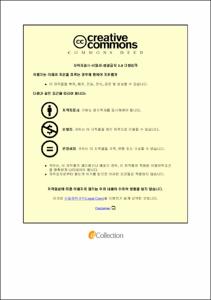건강보험 심사평가원 청구 자료를 이용한 유방암 치료를 위한 국내 의료 여행에 관한 연구
- Abstract
- Purpose
To investigate the annual frequencies and patterns of breast cancer treatment by region, assess the trend of domestic medical travel from non-Seoul regions to Seoul for initial treatment, and identify factors associated with medical travel in breast cancer patients.
Materials and Methods
A nationwide retrospective cohort study was performed using the Health Insurance Review and Assessment data of Republic of Korea. Patients were classified according to the regions in which they underwent pathologic examination (Seoul vs. metropolitan cities vs. other regions). Frequencies of pathologic examinations, diagnosis, and treatment were analyzed according to regions. Domestic medical travel was analyzed according to cities and provinces, and factors associated with medical travel were investigated.
Results
A total of 150,709 breast cancer survivors who were diagnosed between January 2010 and December 2017 were included. The annual frequencies of pathologic examinations, diagnosis, and treatment increased in all regions, and the difference in the frequencies of surgery between Seoul and non-Seoul regions increased over time. The rate of medical travel from non-Seoul regions to Seoul increased from 14.2% (1,161/8,150) in 2010 to 19.8% (2,762/13,964) in 2017. Approximately a quarter of patients from other regions traveled to Seoul, and over 40% of patients from Chungbuk, Gyeongbuk, and Jeju regions traveled to Seoul for treatment in 2017. Young age and regions other than metropolitan cities were significantly associated with the likelihood of domestic medical travel. Patients covered by medical aid or those with other diseases were significantly less likely to travel to Seoul for breast cancer treatment.
Conclusion
The number of patients traveling to Seoul for breast cancer treatment increased over time. Young age, comorbidities, and type of insurance were significant factors associated with medical travel.
|배경 및 목적
한국에서는 암에 대한 치료를 위해 서울 이외의 지역에서 서울로 국내 의료 여행이 집중화 되고 있는 양상을 보인다. 하지만 국내 유방암 환자의 이러한 의료 여행의 동향에 대해서는 알려진 바가 거의 없다. 그래서 지역별 유방암 치료의 연간 빈도와 패턴을 조사하고, 초기 치료를 위해 서울 이외의 지역에서 서울로 국내 의료 여행 동향을 평가하고, 그리고 이런 유방암 환자의 의료 여행과 관련된 요인을 확인하고자 연구를 계획하였다.
연구 방법
한국 건강보험 심사평가원 청구 자료를 이용하여 전국적인 후향적 코호트 연구를 수행하였다. 환자들은 병리학적 검사를 받은 지역에 따라 분류하였다(서울 vs. 광역시 vs. 그 이외의 지역). 병리학적 검사, 진단 및 치료의 빈도를 지역별로 분석하였다. 국내 의료 여행을 시·도별로 분석하고, 의료 여행과 관련된 요인을 조사하였다.
결과
2010년 1월부터 2017년 12월 사이에 유방암 진단을 받은 총 150,709명의 환자가 연구 분석에 포함되었다. 병리학적 검사, 진단 및 치료의 연간 빈도는 서울을 포함한 모든 지역에서 증가했으며, 특히 서울과 비 서울 지역 간의 수술 빈도 차이는 시간이 지남에 따라 증가하였다. 서울 이외의 지역에서 서울로의 의료 여행 비율은 2010년 14.2%(1,161/8,150)에서 2017년 19.8%(2,762/13,964)로 증가 소견을 보였다. 서울 및 대도시 이외의 지역 환자 중 약 4분의 1이 치료를 위해서 서울로 이동하였으며, 특히 2017년에는 충북, 경북, 제주의 환자들의 40% 이상이 치료를 위해 서울의 의료 여행을 하였다. 40세 이하의 젊은 연령과 광역시 이외의 지역 거주가 서울로의 국내 의료 여행이 높은 것과 유의한 연관성을 보였다. 반대로 의료급여 환자 이거나 다른 동반 질환이 있는 경우에는 서울로의 의료 여행이 유의하게 낮은 경향을 보였다.
결론
유방암 치료를 위한 서울로의 국내 의료 여행을 한 유방암 환자의 수와 비율은 치료 방법과 지역에 따른 차이가 있었지만 시간이 지남에 따라 증가하였다. 젊은 연령, 동반 질환, 보험 유형이 의료 여행과 관련된 중요한 요인이었다.
- Issued Date
- 2022
- Awarded Date
- 2022-02
- Type
- dissertation
- Keyword
- breast cancer; medical travel
- Alternative Author(s)
- Jae Ho Jeong
- Affiliation
- 울산대학교
- Department
- 일반대학원 의학과
- Advisor
- 정경해
- Degree
- Doctor
- Publisher
- 울산대학교 일반대학원 의학과
- Language
- eng
- Rights
- 울산대학교 논문은 저작권에 의해 보호 받습니다.
- Appears in Collections:
- Medicine > 2. Theses (Ph.D)
- 파일 목록
-
-
Download
 200000596597.pdf
기타 데이터 / 1.63 MB / Adobe PDF
200000596597.pdf
기타 데이터 / 1.63 MB / Adobe PDF
-
Items in Repository are protected by copyright, with all rights reserved, unless otherwise indicated.